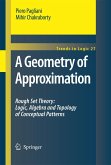This title improves upon the original by: Intrigue: "Beyond Faces" sparks curiosity about what lies beyond a basic feature of simplicial complexes. Power: "Power" emphasizes the wider significance of these structures.The piece could delve into face numbers as a foundational concept: Counting Faces: Explain how the number of faces (points, edges, triangles, etc.) provides initial insights into a simplicial complex's structure. Simplex Homology: Briefly introduce this concept, highlighting how it uses face numbers to reveal hidden properties of the shape.The focus would then shift on the broader applications of simplicial complexes: Modeling Complex Systems: Discuss how these structures can represent complex networks, from social connections to the human brain. Topological Analysis: Highlight how simplicial complexes allow us to analyze the fundamental properties of shapes independent of size or deformation. Applications in Science and Engineering: Explore their use in fields like computer graphics, 3D printing, and even physical simulations."Beyond Faces" suggests a few content directions: Higher Dimensions: Briefly touch upon how simplicial complexes can represent shapes beyond our usual 3D world. Visualizations: Emphasize the importance of using visualizations or interactive tools to help readers grasp these concepts. Historical Context: Briefly discuss the development of simplicial complexes and their role in the history of mathematics.
Bitte wählen Sie Ihr Anliegen aus.
Rechnungen
Retourenschein anfordern
Bestellstatus
Storno









